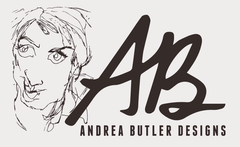How It's Made
People have been weaving fabric for about 6500 years, and the loom I use is of a design which has not changed much since the 13th century. There is something to be said for things which have stood the test of time.
My floor loom is made in Quebec. It’s a LeClerc Fanny, 60” wide and has 4 harnesses. My tapestry loom is a 1940s Leclerc Tissart with an upgraded brake system and shaft frame lever, as the old systems lacked efficiency. I also have a vintage Millville loom in my collection, made in Millville, New Brunswick by G &T Craftsmen in the 1920s.

Thread
When it comes to threads for upholstery fabric, I choose natural fibres and stick mostly to cotton and linen. They are durable, and have good texture. Since they can’t be produced locally, I purchase my materials from a couple of local shops, and a family owned Canadian company. They are located in Quebec and most of the supplies they sell are produced in house with fibres sourced elsewhere. I also delight in collecting small batch supply products from local small producers while I am travelling.

Dye
Although I don’t dye everything, I do dye some fibres. Before I start, I have to consider the hue wanted, the type of fibre, and weight of fibre being dyed. I work with fibre reactive dyes, which contain no heavy metals or other known toxic substances. Using a plastic tub, I add the powder dye, water, and threads. The fibres need to be slowly swirled around for at least an hour, then rinsed repeatedly before they are hung to dry.
Natural dyes are amazing to work with, but the limitation of what I can gather and grow makes it hard to use natural dyes regularly. Natural dye works best on wool, so mostly I use it to achieve colour for tapestry work. After gathering and drying natural dye stuffs like flowers, lichen, or mushrooms, I put a pot of water on the stove. The dye stuff and the wool go in and are stirred constantly for about an hour. The yarn is cooled in the pot before being rinsed and hung to dry.
For colouring furniture wood I use aniline dyes. They are nice because they don’t mask the natural wood grain, and have less impact on the environment than oil based stains. They are mixed with water and are available in wildly vibrant colours, and traditional wood stain colours.

The Loom
There is a lot involved long before I sit at the loom to weave upholstery fabric. I love traditional patterns and spend much time hunting through books and envisioning how each pattern will work with a piece of furniture. Sometimes I know what colours I want to use before the pattern, and sometimes I need to study the piece to decide. Sometimes the colours are decided in discussion with a client.
Once the colours are chosen for warp (length) and weft (width), I have to calculate how many threads are needed for the fabric. After the calculations are complete, I wind off all the warp threads to the same length, bundle them up and take them to the loom. At this point, I spend several hours threading the warp ends through the reed, then through the headles, and tie them to the back of the loom. Next, the warp gets wound slowly onto the back beam combing out tangles with my hands, until the full length is completely rolled onto the beam. At this time, I knot the other ends to the front beam making sure the tension of each bundle is the same. Lastly, I set up the pedals to follow the pattern. Now, I can commence weaving. They don’t call it slow cloth for nothing!

Sewing and Upholstery
I have two different sewing machines for sewing. For most production, I use a regular table top machine. The industrial machine is great for making piping for upholstery and for sewing thicker fabrics.
The upholstery process is a little more involved. I start by removing all staples from the original fabric on the piece. The fabric is removed and saved for reference. Next I examine the state of the structure, webbing, springs etc. to see what needs to be substituted. After replacing structural elements, and possibly foam, the fabric is cut and applied with a pneumatic staple gun. The finishing touch is to trim the piece with gimp or double piping.

Remnants
The textile industry has a shameful history of excessive waste. Garments, home décor items, upholstery, everything made of textiles creates some kind of waste. I reduce scraps by using remnants. I design and produce limited series goods from handwoven fabrics. As the remnants of fabric get smaller, so do the products. Excess warp ends that can’t be woven get tied together and knitted into colourful pillow covers or crocheted into baskets. When the remnants of fabric pieces and warp ends get too small to make something, they are used for stuffing.
